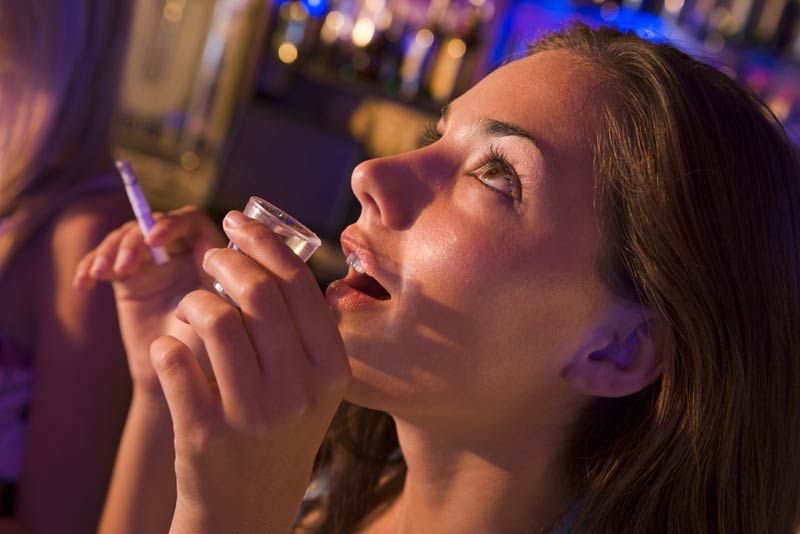Gals Down Alcohol Faster Than Guys

Who's partying the hardest this New Year's? In some places, it may be the ladies.
Male university students in Spain down more booze overall than their female counterparts, but in drinks-per-hour, the ladies are out-quaffing the guys, new research finds.
The study researchers, who interviewed 985 students at the University of Vigo in Spain, also found that women were more sedentary than men, and surprisingly high proportions of both sexes used illegal drugs.
American bingers
Estimates vary on how many American college students binge drink, defined by drinking five or more drinks in two hours for men and four or more drinks for women. However, one in six U.S. adults reports binge drinking about four times a month, with an average of eight drinks consumed per episode, according to the Centers for Disease Control and Prevention (CDC). Binge drinking is most common among 18- to 34-year-olds.
In the United States, mixed-gender housing fuels binge drinking, according to research published in 2009 in the Journal of American College Health. Students in co-ed housing were 2.5 times more likely to binge drink weekly than students in single-gender housing. Other research suggests that binging may be a way to feel a sense of belonging in schools where getting smashed is the norm. In one study presented in August 2012 at the annual meeting of the American Sociological Association, students at a liberal arts college in the Northeast often reported that they didn't want to binge, but felt it was linked with high status in the campus culture.
Booze and gender
Sign up for the Live Science daily newsletter now
Get the world’s most fascinating discoveries delivered straight to your inbox.
In the new study of Spanish students, University of Vigo researchers found that 56.1 percent of women were binge drinkers, compared with 41.3 percent of men. The men still downed more drinks, on average, than women, but they did so at a slower rate.
Other health red flags among women included the finding that 51.2 percent were sedentary, or did not get the recommended amount of physical activity each day, compared with 41.7 percent of men. Among the students who managed to move the recommended amount of time each day, 38.6 percent of men deliberately made time to exercise, compared with only 20.9 percent of women.
Men were heavier drug users than women, however, with 44.9 percent of males and 30.9 percent of females reporting the use of illegal drugs. [10 Easy Paths to Self Destruction]
In most cases, the students' program of study did not make a difference in their health. However, women studying for education careers were much more likely to have disordered attitudes toward food than women in health-related fields, the researchers found. About 19 percent of women in education had attitudes associated with eating disorders, compared with only 6.3 percent of women in health. Overall, 8.8 percent of men reported disordered attitudes toward food.
The researchers first reported their results in August in the Journal of Environmental Research and Public Health.
Follow Stephanie Pappas on Twitter @sipappas or LiveScience @livescience. We're also on Facebook & Google+.

Stephanie Pappas is a contributing writer for Live Science, covering topics ranging from geoscience to archaeology to the human brain and behavior. She was previously a senior writer for Live Science but is now a freelancer based in Denver, Colorado, and regularly contributes to Scientific American and The Monitor, the monthly magazine of the American Psychological Association. Stephanie received a bachelor's degree in psychology from the University of South Carolina and a graduate certificate in science communication from the University of California, Santa Cruz.











